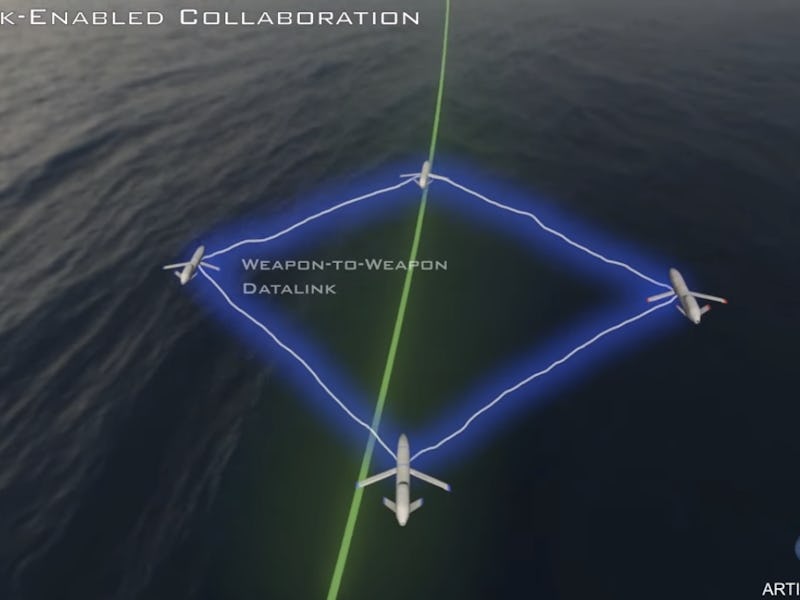DARPA Develops Drone Intelligence That Will Enable Them to Travel in Flocks
They're meant to reach their targets even through signal-jamming technology.

In computer games like Starcraft, players can control large groups of units at once — one player controlling whole squadrons or armies of ships, planes, or troops. DARPA’s CODE concept, short for Collaborative Operations in a Denied Environment, is a bit more difficult than Blizzard’s real time strategy hit, but it’s a similar concept. The program uses open-source software technology to create a system where weaponized drones — essentially the 21st century version of a kamikaze plane — can communicate with one another, flying in formation and performing complicated tasks without having to be piloted individually.
Per a DARPA announcement, the program is meant to “demonstrate the value of collaborative autonomy,” which means the drones are smart enough to sync with one another and be flown en masse. A flock of drones.
When the drones can talk to one another, it also means that they won’t lose track of one another when they enter GPS-compromised environments. In other words, the direct links between the drones means they don’t have to keep pinging their location off GPS satellites to navigate around and work with one another, they function as a semi-autonomous group, which means the human pilot working out of a shipping container somewhere in Nevada has less to do.
The CODE project is also attempting to teach the drones how to recognize and respond to different obstacles and threats, analyzing targets and shifting their priorities accordingly. Essentially, DARPA will soon be able to send a squadron of autonomous hunter-killer robot drones into an area like ordering Starcraft units to attack, and they’ll be relatively impervious to jamming or EMP-disruption technology.
Once again, it’s a good thing they’re on our side.